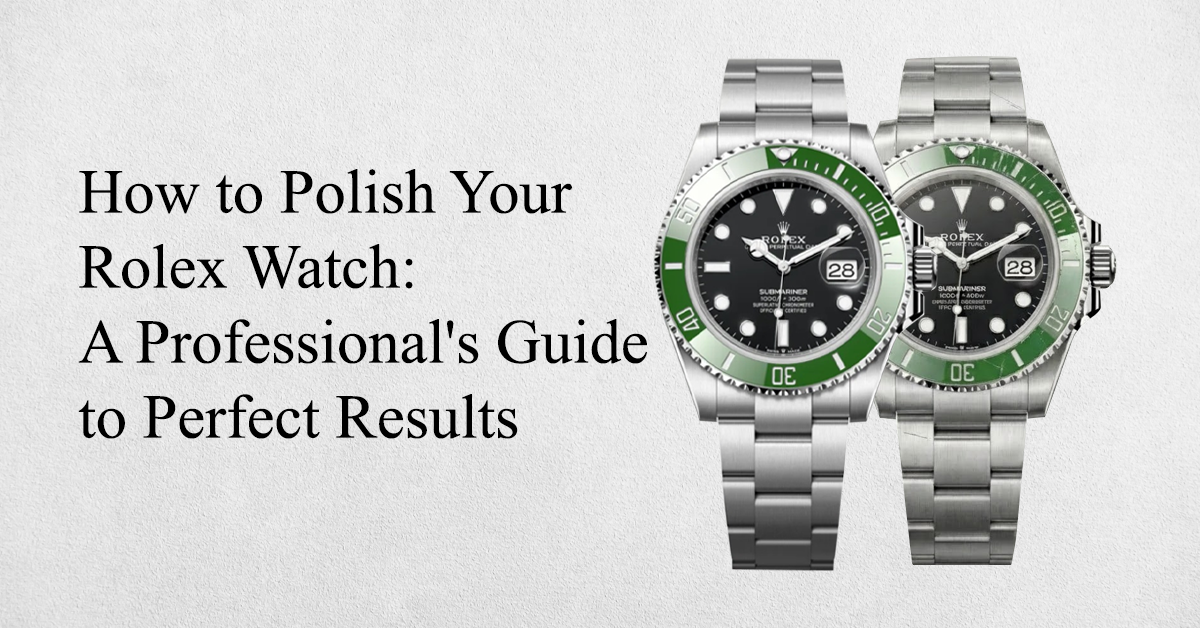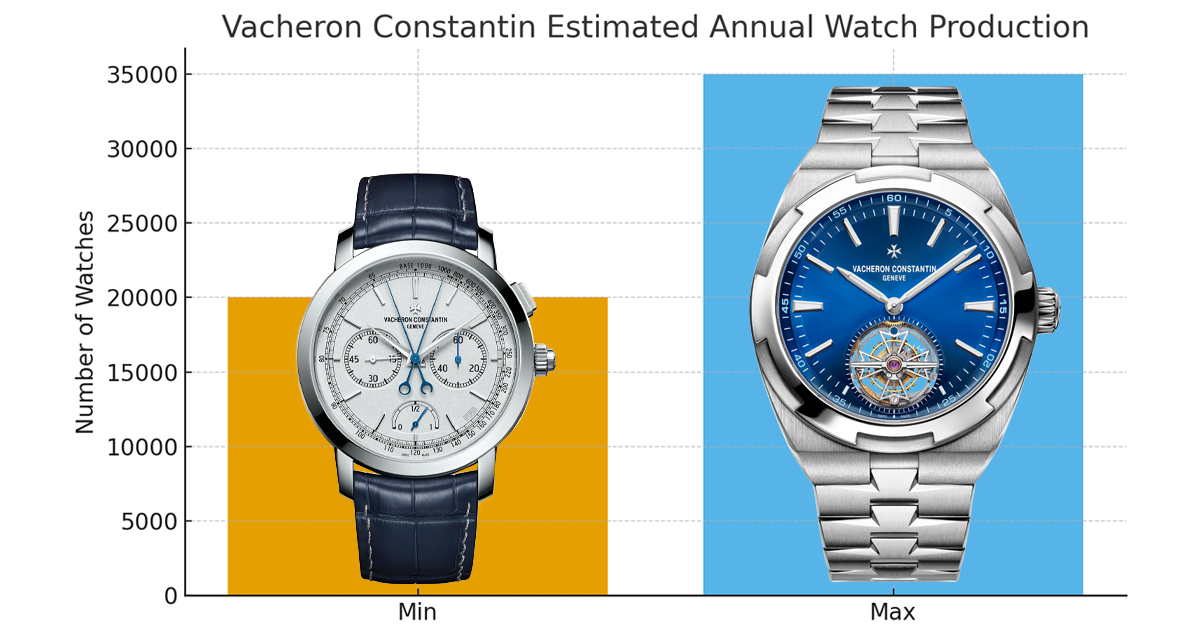
Kristi Noem’s $50K Rolex Sparks Backlash During Prison Visit
You won’t believe what Kristi Noem wore to a Salvadoran prison. During her controversial visit to see deported Venezuelans, she sported an 18-karat gold
Want to know how proper cleaning can substantially extend your stainless steel watch’s life? Stainless steel watches dominate today’s market. People love them because they look great with both casual and formal outfits. These timepieces are tough, but they can get scratched easily and lose their shine as dirt and grime build up.
Watch cleaning services don’t come cheap. You’ll pay anywhere from $45 to $200 based on your watch’s brand and where you live. On top of that, your watch’s LCD panel typically lasts about 8 years, and poor maintenance can cut this time short. Learning to clean your watch at home offers economical solutions and helps maintain its looks and performance.
Your watch needs a quick wipe-down each day if you wear it often. A monthly deep clean keeps it in top shape. In this piece, you’ll learn expert cleaning techniques and polishing methods. You’ll also discover the common mistakes that can damage your stainless steel watch.
Stainless steel watches can stain and get damaged, despite what their name might suggest. Your timepiece needs regular cleaning to keep it looking good and working well. Let’s look at why consistent care matters so much for your watch.
Your stainless steel watch’s sleek, polished look starts to fade as it faces daily wear and tear. We noticed this happens because your watch touches your skin all day. It picks up oils, sweat, and dead skin cells. These substances from your body contain fatty acids that can damage your timepiece’s protective finish.
The tiny gaps between bracelet links become hiding spots for dust and dirt. Your watch band might look solid, but it has many small spaces where grime builds up without you noticing. Even the best-designed watches lose their shine as particles collect on the surface.
You should pay extra attention to the metal bracelet. A dirty metal watchstrap creates both looks-related and practical issues. The built-up dirt mixed with sweat can leak onto your clothes. This often leaves marks around shirt cuffs and might cause skin rashes.
Many people think “stainless” means the watch can’t rust – that’s not true. Stainless steel stays rust-resistant because of a protective oxide layer on its surface. This protection can break down in certain conditions, which leaves the metal exposed.
The protective barrier gets weakened by several things:
Rust usually starts under the case back gasket first. This spot creates the perfect environment for corrosion. Dirt gets trapped there, the oxide layer breaks down, and moisture stays present – everything rust needs to grow.
A dirty stainless steel watch faces more than just looks-related problems. The buildup of dirt and resulting corrosion can mess with your timepiece’s movement.
When dust and grime settle into movement parts, they create more friction. This can throw off your watch’s accuracy. Really bad cases of corrosion might make your watch stop working completely.
Your watch’s bracelet parts can also run into trouble. The hinges between links might get stiff or wear unevenly as dirt builds up. The crown can get harder to turn when corrosion sets in, making it tough to set the time or wind your watch.
Regular cleaning helps you avoid these problems. It’s not just about keeping your watch looking nice – it’s about making sure it keeps working well. A good cleaning routine stops these issues before they start, and you won’t have to deal with repairs or buying a new watch too soon.

Image Source: Watchlab Singapore
Your stainless steel watch needs proper cleaning to keep its shine. The process isn’t complicated once you know what you’re doing. Here’s a simple way to clean your watch safely without damaging it.
A gentle wipe with a soft cloth removes surface dirt and grime. Microfiber or chamois cloths work best because they lift dirt without scratching the polished surface. A clean dish towel or t-shirt hem can work too, though they might not clean as well as finer fabrics. This quick daily habit keeps your watch looking good between deep cleanings.
A good soak cleans watches really well – but only if your timepiece is water-resistant. Mix lukewarm water with a few drops of mild, ammonia-free dish soap in a small bowl. The water temperature matters – not too hot or cold to protect the internal parts. Let it soak for 10-30 minutes with light dirt or 1-2 hours for tougher grime. Important note: Skip this step if your watch isn’t water-resistant or just soak the strap while keeping the case dry.
A soft-bristled toothbrush helps clean those hard-to-reach spots. Focus on the spaces between bracelet links where sweat and dirt build up. Stainless steel can scratch easily, so use light pressure. Clean the bracelet and clasp with gentle circular motions. The watch face and case need extra care – avoid brushing directly on the crystal.
Running lukewarm water or a bowl of clean water removes all soap residue. This step matters because leftover soap can dull the surface and cause tarnishing. Pat your watch dry with a soft, absorbent cloth or towel. Make sure you get into all the corners. Some people use a hairdryer on low to dry tricky spots. Let your watch air dry for 1-2 hours before wearing it.
Give your watch that final gleam with a proper polish. Put some glass cleaner on a soft cloth (never spray directly on the watch) and wipe everything in gentle circles. Stubborn dirt in the bracelet? Dip your soft brush in glass cleaner, scrub carefully, then wipe with a clean cloth. This last step takes care of smudges and fingerprints, making your stainless steel watch shine like new.
Do this monthly and wipe down your watch after wearing it. Your timepiece will look great and work well for years.
Your stainless steel watch might lose its shine despite regular cleaning. A good polish can bring back that factory-fresh gleam and get rid of light scratches. Polish works differently from a simple cleaning – it removes a tiny layer of metal to create a smooth, reflective surface.
Polishing cloths help you fight against dulling and minor scratches. You’ll want to grab a polishing cloth if:
Microfiber cloths work great for daily care. They trap dirt and dust without scratching the surface. For better shine restoration, specialized metal polishing cloths like Cape Cod Polishing Cloths deliver excellent results. They remove oxidation and enhance the luster.
Note that you should use separate cloths to clean and polish. Using the same cloth can lead to scratches from trapped dirt particles.
Pick a polish made specifically for fine metals to care for your stainless steel watch. Many experts recommend Cape Cod Polishing Cloth for Fine Metals.
Here’s how to apply polish correctly:
Clean your watch between polishing sessions to remove any leftover polish. This step prevents different polishing compounds from mixing and reduces the effectiveness of your next polish.
Important note: Polish removes material from your watch permanently. Use it much of either to keep your timepiece in good shape.
Your watch can suffer permanent changes from polishing mistakes. Here’s how to protect your timepiece:
Know your limits. DIY polishing works fine for small imperfections, but let professionals handle major restoration. Polishing motors and buffing wheels remove metal faster and need proper training.
Watch your pressure. Start light and only increase if needed. Too much pressure takes off excess metal and can create uneven surfaces.
Keep those sharp lines and corners. Watch designs feature precise edges that make them look great. Sloppy polishing can round these edges and change how your watch was meant to look.
Set real goals. Polish won’t eliminate every tiny micro-scratch – they’ll show up again after wearing the watch. Focus on removing the most important scratches while keeping the original design intact.
By doing this, you’ll bring back your stainless steel watch’s shine and protect its value.

Image Source: Hodinkee
Proper care involves more than just knowing the right cleaning techniques. Learning what to avoid is a vital part of watch maintenance. Many watch owners damage their timepieces without realizing it. Let’s get into these common mistakes and learn how to prevent them.
Water might be your watch’s biggest enemy, but some cleaning agents can be even more destructive. Your stainless steel watch can suffer serious damage from products containing benzene, ammonia, or chlorine. These harsh chemicals can also irritate your skin when you wear the watch later.
Common household cleaners contain chemicals that break down silicone or rubber gaskets that protect your watch from water. A single drop of water inside your timepiece can cause major internal damage. Skip the aggressive cleaners and use mild dish soap without ammonia and corrosives.
Stainless steel seems tough but scratches easily. Your watch’s surface can get permanent marks from too much pressure during cleaning, especially with abrasive materials. Use a light touch when you clean, particularly while scrubbing with a toothbrush or polishing.
Professional help is often needed to remove scratches once they appear. Let the cleaning solution do its job instead of using force.
Submerging a watch not designed for water exposure ranks among the most damaging mistakes. There’s a big difference between “water-resistant” and truly waterproof watches. Even water-resistant models have specific rating limitations.
Never immerse a non-water-resistant watch completely. Clean only the strap while keeping the case dry. Make sure the crown is secure before any water contact with water-resistant watches.
Poor drying after cleaning creates problems you might not notice right away. Moisture stuck in bracelet links or under the case can lead to:
Pat your watch dry with an absorbent cloth after cleaning. Surface drying isn’t enough – give your watch 1-2 hours to air dry before wearing it. Many watchmakers suggest wearing your clean watch since your body heat helps remove moisture from tight spots.
A good cleaning routine will make your watch last longer. The right balance between easy maintenance and detailed care will keep your timepiece in great shape for years.
A quick daily wipe-down protects your watch from buildup. Take a soft microfiber cloth to remove body oils, sweat, and dust that builds up during the day. This simple habit takes seconds but prevents damage over time.
Monthly cleaning is essential for proper maintenance. Watches worn daily need a complete cleaning each month to remove grime from bracelet links and hidden spots. Your watch might need more frequent cleaning if you use it for sports or outdoor activities.
Whatever schedule you follow, watch for these signs that your timepiece needs immediate cleaning:
Luxury automatic or mechanical watches need professional service every three-to-five years. This applies even if your watch seems fine.
Professional service has vital steps that home cleaning can’t match:
Get professional help right away if you see moisture inside the watch case, hear rattling sounds, or notice malfunctioning complications (day, date, chronograph). These signs point to serious problems that need expert help.
Regular maintenance keeps your stainless steel timepiece beautiful and functional. This piece explores why cleaning matters – from preventing corrosion to keeping that signature shine. The step-by-step cleaning process is a great way to get started at home and save substantial money compared to professional services.
Consistency makes the biggest difference in watch care. Daily wipe-downs and monthly deep cleaning will substantially extend your timepiece’s lifespan. Knowing when to polish or seek professional help will give you confidence that you won’t damage your valuable accessory.
Your investment needs protection from unnecessary harm. Harsh chemicals, excessive pressure, and improper water exposure can pose serious risks. You can prevent these issues easily with your new knowledge.
Your stainless steel watch serves as both a functional tool and a fashion statement that deserves proper care. Watch maintenance should be part of your daily routine. The right techniques and attention will keep your timepiece accurate and looking its best for years.
For daily wear, a quick wipe-down with a soft cloth is recommended. A more thorough cleaning should be done monthly, or more frequently if the watch is exposed to harsh conditions.
It’s best to use a mild, ammonia-free dish soap. Avoid harsh chemicals like benzene, ammonia, or chlorine-containing products as they can damage the watch’s metal and seals.
Only submerge your watch if it’s water-resistant. Check your watch’s water resistance rating before cleaning. If it’s not water-resistant, clean only the strap while keeping the case dry.
You can use a polishing cloth designed for fine metals to restore shine and remove light scratches. For deeper polishing, use a metal polish specifically made for watches, applying it gently with a soft cloth.
Luxury automatic or mechanical watches typically need professional servicing every three to five years. Seek immediate professional attention if you notice moisture inside the case, rattling sounds, or malfunctioning complications.
I confirm the subscription of this blog to the Paperblog service under the username WMD.

You won’t believe what Kristi Noem wore to a Salvadoran prison. During her controversial visit to see deported Venezuelans, she sported an 18-karat gold

A pristine vintage Rolex with unpolished lugs can fetch thousands more dollars than its over-polished counterpart. Rolex watch polishing sparks heated debates among watch enthusiasts

The mystery of Vacheron Constantin’s annual watch production has captivated luxury timepiece enthusiasts for decades. This prestigious Swiss manufacturer thinks over every detail and keeps